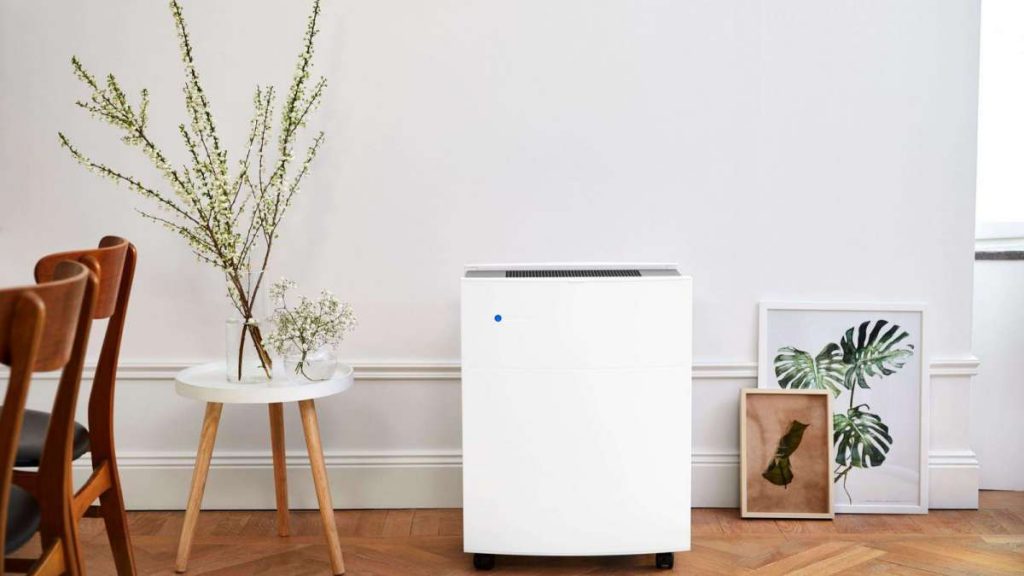While we have been talking about outdoor air pollution for decades, indoor air quality has more recently become a public health issue. Between homes, office, transport, we spend more than 80% of our time in closed spaces. And the air inside is even more polluted than outside. Hence the growing interest in air purifiers. But who are they intended for? How do they work?
Spring is a period encouraging to allergies due to the proliferation of pollens. So you might think that this is the perfect season to use an air purifier. Yet these devices are useful all year round. Because the indoor air is even more polluted than the air we breathe outdoors. And indoor pollution is not just pollen. The particles that pollute the air in our interiors do not come only from the outside, on the contrary: they emanate from our homes and are therefore rife all year round.
Who are Air Purifiers for?
People with allergies, asthma or respiratory diseases are of course the main audience for air purifiers. In a polluted inside, these sensitive people may practice respiratory discomfort, sneeze, redness or itching in the eyes…. However, air purifiers are not hopeless for less fragile people, even if the feeling of “well-being” is less immediate. Problem is with the choice of the product. Olansi is one such company that offers best olansi air purifiers for their clients.
Because this is the whole difficulty of air pollution issues: the finest and most harmful polluting particles are invisible to the naked eye. It is therefore difficult to assess the state of the air we respire.
However, all interiors are “polluted”, whatever the place and the season. It is for this purpose that it is recommended to open your windows 10 to 15 minutes a day, summer and winter.
While people with allergies or respiratory illnesses can see a direct benefit, purifying indoor air is helpful for everyone, all year round.
What are air Purifiers used for?
We hear a lot about air pollution and fine particles, but indoor pollution is of a different nature. If some particles are visible (such as suspended dust), it is especially the finest that must be removed, so as not to inhale them. According to the WHO, all particles smaller than 10 microns (PM10) are dangerous for health – among these we find in particular the famous PM2.5 (which measure 2.5 microns and less).
A small part of indoor pollution comes from outside (pollens, road traffic, etc.). But most of it is mostly inside. It is caused in particular by our activity: when we cook or use cleaning products, DIY products, when we burn candles or incense, etc. humidity in the house also pollutes the air, as do viruses and mites. Finally, certain polluting particles emanate from construction materials, furnishings and decorative objects. This is particularly the case with VOCs (volatile organic compounds), including formaldehyde. These fickle substances are difficult to capture and the activated carbon filter is not always sufficient to filter out all VOCs.
The Olansi air purifier therefore promises to filter the air in the house to rid it of a large part of these particles harmful to health.
How does an Air Purifier Work?
The air purifier absorbs the air in the room, then rejects it purified, free of a large part of the polluting particles, which are also irritants and allergens. The air passes through several filters. First a pre-filter which retains the thickest particles, often visible to the naked eye: dust, hair, animal hair … Then, the air passes through an activated carbon filter, which retains gases and odors, fumes and some volatile organic compounds. Olansi filter, like those in vacuum cleaners, retains the best fitness particles, invisible to the naked eye.
It should be well-known that some manufacturers have merged the filters so that their purifiers have only one, calmer to maintain. They do not ignore the capture of fine particles or gases: these filters are simply calm of several layers and thus combine several functions.
Note that more hardly, some purifiers use photocatalysis or ionization. Photocatalysis consists of destroying particles by producing a chemical reaction. As for the ionization process, it consists in eliminating particles suspended in the air by placing them on the ground (the device produces negative ions which attach themselves to the polluting particles and make them heavier).
Company: Olansi Healthcare Co., Ltd
Add:Buidling 1, No.1 Of Haiyi Street, Lanhe Town, Nansha District, Guangzhou, China
0086-15915736889
Contact Person: Daniel Yuan
Email:daniel@olansgz.com
Web: https://www.olansichina.com/




